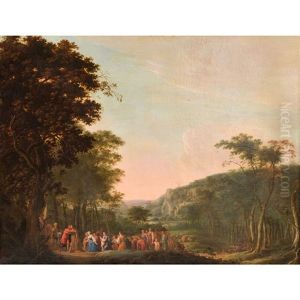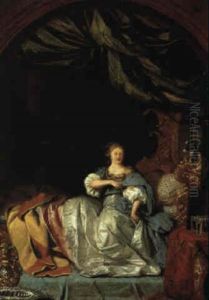Daniel Jansz Thievaert Paintings
Daniel Jansz Thievaert was a Dutch Golden Age painter whose life and work are not as widely known as those of his contemporaries, but who nonetheless made significant contributions to the art world of his time. Born in 1606, Thievaert's early life and training are somewhat obscure, but it is evident from his surviving works that he was fully immersed in the artistic environment of the 17th century Netherlands, a period and place renowned for its flourishing arts scene.
Thievaert's work primarily consisted of portraits and genre scenes. He had a keen eye for detail and an ability to capture the subtle nuances of expression and mood, which made his portraits particularly engaging. His genre scenes, often depicting everyday life with a remarkable sense of realism and emotional depth, were also well-regarded. Despite his talent, Thievaert did not achieve the same level of fame as some of his contemporaries, such as Rembrandt or Vermeer, which may be attributed to the smaller volume of his work or perhaps to the less prominent patrons he worked for.
Throughout his career, Thievaert remained in the Netherlands, where he contributed to the local art scene. He was part of a network of artists and intellectuals, which allowed him to stay informed about the latest artistic developments and theories. His style evolved over time, reflecting the broader shifts within Dutch art, yet he always maintained a distinctive approach, particularly in his use of light and shadow, which added a dramatic quality to his compositions.
Daniel Jansz Thievaert died in 1669, leaving behind a modest but compelling body of work. Although he may not be as well-known as some of his peers, his contributions to Dutch art have been recognized and appreciated by art historians and collectors. His paintings are now considered valuable examples of the Dutch Golden Age, offering insights into the era's artistic trends and societal norms. Thievaert's legacy, while understated, is a testament to the richness and diversity of 17th-century Dutch painting, embodying the era's spirit of innovation and its meticulous attention to the beauty of the everyday.














